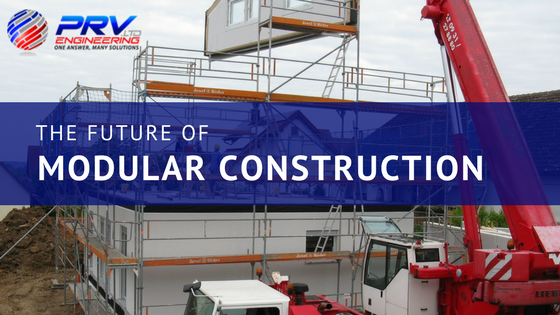
Modular construction is the process where prefabricated buildings are constructed off-site and then later delivered for assembly. If you think small homes or large apartment blocks, you’d be correct on both accounts. Modular buildings are all around us and particularly popular with hotels and student residences due to the associated advantages. For the most part, the same stringent building processes apply but with two major differences; lower construction costs and projects can be completed in nearly half the time.
How Does Modular Construction Work?
Modular construction uses the same materials and conforms to the same (or higher) building codes and standards as conventional construction and is often referred to as precision built homes. Modular homes do not have axles or a metal frame which means they are typically transported to their site on flatbed trucks. Once the prefabricated sections have been produced and delivered, they can be lifted and placed on basement walls using a crane.
Sections are then set onto the foundation and joined together to make a single structure. The building modules can be placed, side-by-side, end-to-end, or even stacked. This provides construction companies with a wide variety of configurations and styles in the building layout. Modular buildings closely resemble site-built facilities and extremely difficult to distinguish between the two.
Reasons To Implement Modular Construction
Besides being a safer, more affordable and time-saving option, there are many other reasons why modular construction is the preferred choice for many. Among many others, we’ll take a look at some of the major benefits.
Environmentally Friendly With Less Waste
Modular construction produces much lower waste than traditional construction as the same building plans are constantly used. This results in the manufacturer knowing exactly what materials were used on a particular project. The consistency of modular construction allows builders to design plans using common sizes of wood, wallboards and ordering special material in bulk. The controlled environment of the assembling factory also allows for more accurate construction while allowing the extra materials to be recycled in-house.
Faster Construction Times
Because modular buildings are constructed simultaneously with on-site and foundation work, projects can be completed 30-50% faster than traditional construction. A good example of limitations during a site-built construction is that walls cannot be set until the floors are in position. Similarly, ceilings and rafters can’t be added until the walls are in place.
Improved Safety For Workers
Modular construction eliminates a number of hazards such as injuries or fatalities when falling from a roof or other heights. Roofs are now constructed on the ground and then later hoisted into position using a crane. There is also less ergonomic strain on workers as they perform tasks on smaller parts of the project in easier accessible areas which reduces the need to reach and stretch. Working in inclement weather conditions don’t apply to modular construction as work is done in a controlled environment.
Eliminating Environmental Factors
Adding to environmental safety, more than 60% of construction takes place inside a factory which nullifies environmental factors. Besides the final assembly on-site, weather delays don’t affect the construction project. As a result, buildings are constructed faster and occupied sooner creating a better return on investment.
High Building Standards With Quality Materials
Modular buildings are built in accordance with appropriate local and national regulations and codes. As modules are transported to the final site, each one must be built to independently withstand travel and installation requirements. This typically means that independently durable components yield a more durable final product compared to site-built structures.
Modular buildings often use Structural Insulated Panels (SIPs) which offer a range of advantages over traditional building materials. SIPs panels are light and durable combining panel board and either closed-cell polyurethane (PU) or expanded polystyrene (EPS) insulating foam. They are air-tight providing excellent thermal performance, superior damp and cold resistance. Compared to timber and other conventional building materials, they are immune to compression shrinking and cold bridging.
Our Conclusion
Modular construction certainly shows its worth and even more so in countries with potential markets located far from industrial centers. Australia and parts of Africa are good examples. Building structures in remote locations are typically much more expensive but modular construction could change that. Among others, modular buildings are beneficial in providing medical and sanitary facilities where time, space and funding may be an issue.
Modular construction companies today can work with superior levels of design and sophistication exceeding all expectations. Architects, developers and business owners alike, take heed as modular buildings are serious competition to site-built construction companies.
What do you think of modular construction and can you think of more pros or cons? We’d love to hear from you especially if you’re in the construction business. Please share your comments in the section below or find us on Twitter, Facebook, YouTube, Google+ or LinkedIn and use our new hashtag #PRVtech.
For those who don’t know, PRV Engineering specialise in various industries including construction, structural and architectural steelwork, site work installation and maintenance, among others. Get in touch if you have any questions or if you need assistance with your projects.
This site uses Akismet to reduce spam. Learn how your comment data is processed.


 Mail:
Mail: 




Leave a Comments